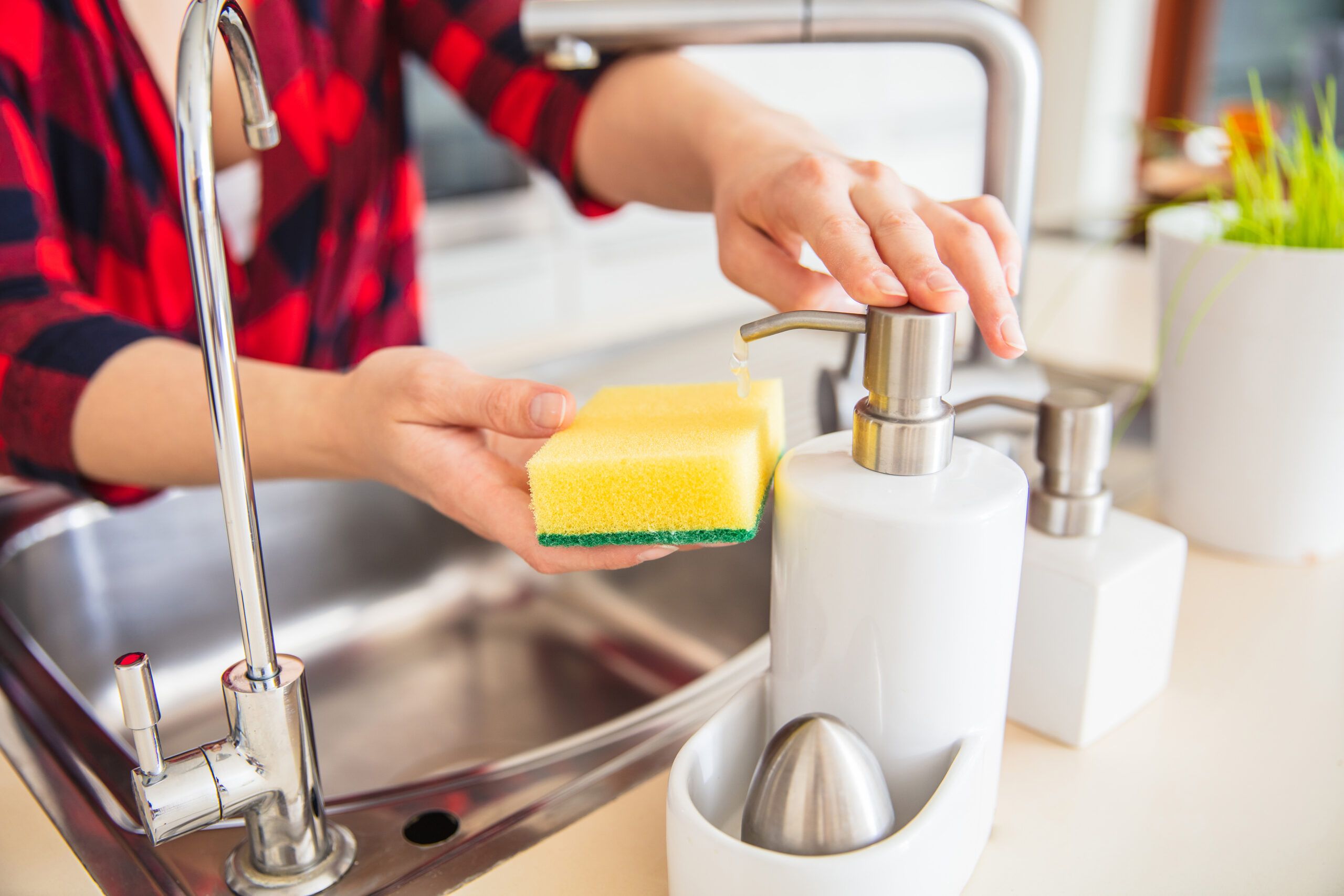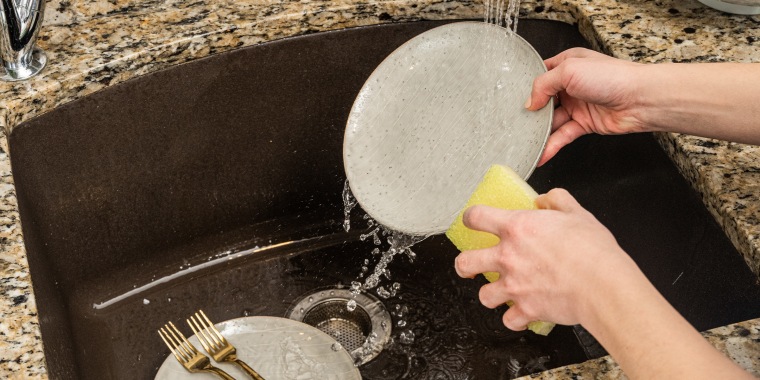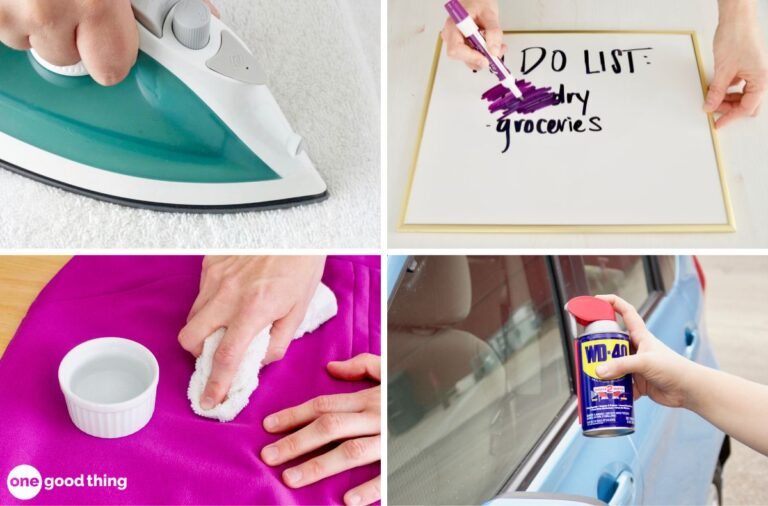When Should You Get Rid Of Your Sponge?
Sponges are a common kitchen cleaning tool, but they can quickly become a breeding ground for bacteria. It is important to regularly examine and replace your kitchen sponge to ensure that it does not cause a health hazard. Depending on the frequency of use, you should consider replacing your sponge every one to two weeks. If you notice any discoloration or an unpleasant odor, it is important to replace your sponge immediately.
What Is a Sponge?
Sponges are a multi-functional tool that can be found in most kitchen and bathroom sinks. They are useful for a variety of tasks such as cleaning dishes, wiping surfaces, and even scrubbing surfaces. Sponges are made from a variety of materials including cellulose, foam, and spongy compounds. They come in a variety of shapes and sizes, and can be used for a variety of purposes. Sponges are also known to be a breeding ground for bacteria, which is why it is important to replace them regularly. Knowing when to get rid of your sponge is important in order to keep your home clean and healthy.
Benefits of Using a Sponge
One of the most popular cleaning tools, sponges offer a variety of benefits that make them a great choice for household cleaning. Sponges are absorbent, so they can easily soak up spills and messes. They are also very durable, so they can be reused multiple times. Plus, sponges are easy to use and relatively inexpensive.
Sponges are also great for scrubbing tough stains and messes. The rough surface of the sponge helps to agitate debris and grime, making it easier to remove. Plus, sponges are ideal for cleaning hard-to-reach areas like crevices and corners. And if you’re looking for a quick cleanup solution, sponges can be moistened and used to wipe down surfaces in no time.
When it comes to kitchen cleaning, sponges are a must-have. They are great for wiping down surfaces and counters, cleaning dishes, and removing stuck-on food. And when used with a cleaning solution, sponges can help disinfect and sanitize surfaces, making them safe for use.
When to Replace Your Sponge
While sponges offer a variety of benefits, they should be replaced on a regular basis. Sponges can harbor bacteria and germs, so it’s important to replace them every two to three weeks, or when they start to smell. If you’re using a sponge to clean food, it should be replaced more often. You should also replace your sponge if it begins to tear or crumble.
Disadvantages of Using a Sponge
for Household Cleaning
The humble sponge is a common and useful tool for cleaning around the home. However, it can also be a breeding ground for bacteria if it is not changed regularly. It is important to know when it is time to throw away an old sponge, and replace it with a new one. This article will explore the disadvantages of using a sponge for household cleaning, and when you should replace it.
Sponges can be efficient tools for wiping down surfaces and cleaning messes. However, they can quickly become breeding grounds for bacteria if they are not properly taken care of. Every time you use a sponge, bacteria from the surface can get trapped in the sponge and will start to grow. This can cause the spread of germs around the home, which can be hazardous to your health. Additionally, sponges can start to smell over time, as the bacteria accumulates.
It is important to replace your sponge regularly. Generally, a sponge should be changed out every two weeks. This ensures that bacteria and odors do not accumulate, and that your sponge remains clean and effective. Additionally, if you use your sponge to clean up raw food, or if you have an open wound, you should replace your sponge even more frequently.
In conclusion, a sponge is a useful tool for cleaning around the home. However, it is important to know the disadvantages of using a sponge and when it is time to get rid of it. Sponges can quickly become breeding grounds for bacteria, causing the spread of germs and unpleasant odors. Therefore, it is recommended that you replace your sponge every two weeks, and more frequently if you have open wounds or use it for cleaning up raw food.
When Should You Discard a Sponge?
Sponges are a cleaning staple in most households and can be incredibly useful for a variety of tasks. While sponges are a great cleaning tool, they can also become a breeding ground for bacteria and germs over time. Knowing when to get rid of a sponge is an important part of maintaining a healthy and clean home.
Sponges should be discarded if they look or smell bad, are discolored, or are beginning to fall apart. Additionally, sponges should be replaced every few weeks. This is because bacteria and germs can easily build up on the sponge, leading to a higher risk of foodborne illnesses and cross-contamination.
When using a sponge, it is important to rinse it with hot water after each use and allow it to air dry. Additionally, sponges should not be used to clean raw meat, fish or poultry. If a sponge is used to clean these items, it should be discarded immediately.
Cleaning with a sponge can be a great way to keep the home clean. However, it is important to be aware of the potential risks associated with using a sponge and to know when it is time to replace it. By following the guidelines above, you can help prevent the spread of germs and bacteria and maintain a clean, healthy home.

How to Dispose of a Sponge
Sponges are an essential cleaning tool, but they don’t last forever. Knowing when to get rid of your sponge and how to dispose of it properly is key to keeping your home healthy and clean.
The most important factor to consider when deciding when to replace your sponge is how often you use it. If you use your sponge regularly to clean dishes, countertops, and other surfaces, you should replace it every week or two. If you only use your sponge for occasional clean-ups, you may be able to make it last for a month or two. However, if you notice any discoloration, unusual odors, or other signs of age, it’s time to replace it.
When you’re ready to dispose of a sponge, the best method is to throw it away in the garbage. Sponges can also be composted, though they may take up to a year to break down completely. If you’re concerned about the environmental impact, consider investing in reusable sponges and washing them regularly.
No matter how often you use your sponge, it’s important to keep an eye on its condition and replace it when necessary. Doing so will help keep your home free of bacteria and other germs.
Alternatives to Using a Sponge
Sponges are a common cleaning tool used to wipe up messes and scrub surfaces in the kitchen, bathroom, and other areas. While they can be convenient and effective, sponges can become dirty and are difficult to clean. To reduce the chances of spreading bacteria, it is important to know when it is time to get rid of your sponge. Alternatives to using a sponge are also available that can provide a more sanitary clean.
Microfiber cloths are a great alternative to sponges. They are highly absorbent and can be used to wipe up messes and scrub surfaces with ease. Microfiber cloths are also easy to clean and can be washed in a washing machine. Reusable cleaning pads are another great option. They are made of a sturdy material that is durable and can be used in place of a sponge. They are also easy to clean and can be washed in the dishwasher.
Disposable cleaning wipes are a great option for quick cleanups. They are pre-moistened and can be used to clean up messes quickly and easily. Disposable cleaning wipes are also great for cleaning areas that are hard to reach with a sponge. These wipes are also convenient and can be discarded after use.
In addition to these alternatives, there are other ways to clean without using a sponge. Cleaning with vinegar and baking soda is a great way to eliminate germs and bacteria. Cleaning with baking soda and vinegar is also an inexpensive and eco-friendly way to clean. Steam cleaning is another great option for sanitizing surfaces. It is an effective way to clean and sanitize surfaces without the use of chemicals.
Overall, it is important to know when it is time to get rid of your sponge. Alternatives to using a sponge are available that can provide a more sanitary clean. Microfiber cloths, reusable cleaning pads, and disposable cleaning wipes are all great options for cleaning without a sponge. Cleaning with vinegar and baking soda or steam cleaning are also great alternatives.
Cleaning with Alternatives
Sponges are a common go-to when it comes to cleaning, but their lifespan is limited. While it may seem like a simple and cost-effective tool, it’s important to know when to dispose of the sponge and explore alternative cleaning methods.
One of the most popular alternative cleaning methods is microfiber cloths. They are highly absorbent, lint-free, and non-abrasive, making them perfect for surfaces like countertops, windows, and mirrors. Another alternative is a clean rag that is made from a cotton t-shirt or other material. These are ideal for wiping down surfaces like cabinets and furniture.
When it comes to scrubbing, a nylon scrub brush is a great tool for sinks, tubs, and showers. And for more delicate surfaces, a brush with natural bristles is best. For tougher grime and stains, a toothbrush or small brush is ideal.
Finally, consider using natural cleaners like vinegar and baking soda for an eco-friendly way to clean. These are great for removing soap scum, mildew, and stains.
Ultimately, when it comes to cleaning, there are many alternatives to sponges. By understanding the different types of materials and tools available, you can choose the one that works best for your cleaning needs.
Final Thoughts
When it comes to sponges, it can be difficult to know when it’s time to let them go. The answer is not always clear cut, but there are a few good indicators that will help guide your decision. If your sponge is starting to smell bad, it’s likely time to throw it away. Additionally, if it’s starting to look discolored or feel slimy, it’s probably time to replace it. Finally, if your sponge is falling apart, it should probably be discarded. Ultimately, the best way to know when to get rid of your sponge is to pay attention to how it looks and smells. If it’s not looking or smelling its best, it’s probably time to say goodbye.
FAQs About the When Should You Get Rid Of Your Sponge?
1. How often should I replace my sponge?
Answer: It is recommended to replace your sponge every two to three weeks. You should also replace it earlier if you notice any signs of wear and tear or if you use it to clean up any raw meat, fish, or poultry.
2. What is the best method for cleaning my sponge?
Answer: The best way to clean a sponge is to soak it in a bleach solution for five minutes before washing it with hot, soapy water. Rinse the sponge with clean water and allow it to air dry completely before using it again.
3. Can I put my sponge in the dishwasher?
Answer: Most sponges are not dishwasher-safe and can be damaged in the high heat and pressure of a dishwasher. It is best to hand wash your sponge with hot, soapy water and a bleach solution.
Conclusion
In conclusion, it is important to regularly clean and replace your sponge in order to keep it as hygienic as possible. If your sponge begins to look worn out or has an unpleasant smell, it is best to replace it as soon as possible. You should also make sure to replace your sponge at least once a month to ensure that it remains clean and free of bacteria.






